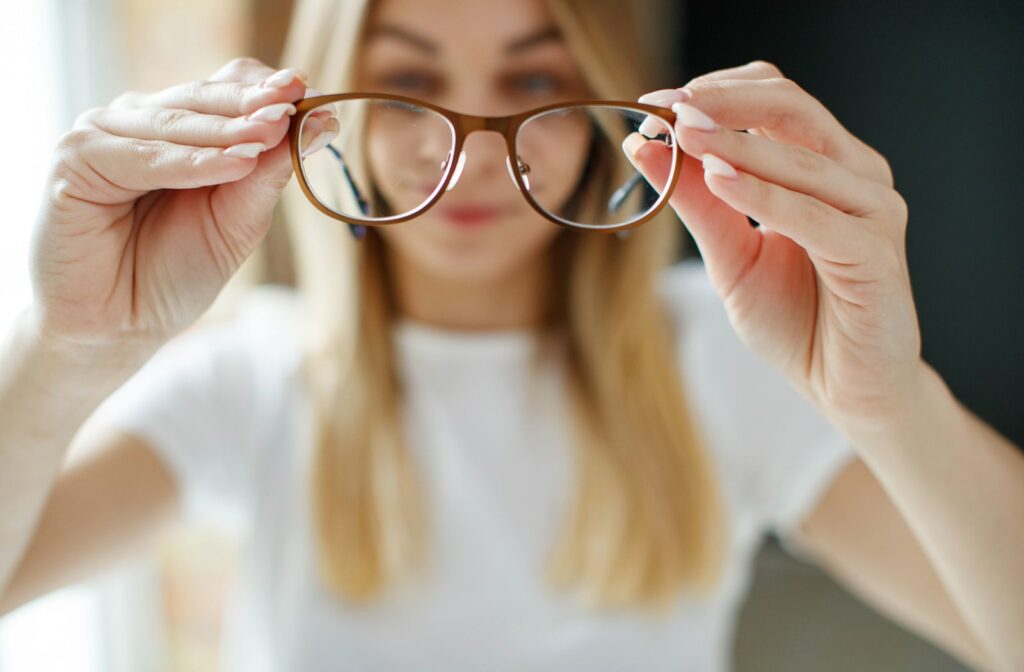Myopia, also known as nearsightedness, affects a person’s ability to see objects in the distance clearly. It typically begins at a young age and often progresses into adulthood. Comprehensive eye exams are capable of diagnosing this issue, and early intervention can prevent it from progressing into more severe vision issues, like high myopia.
Myopia management, also known as myopia control, is the practice of helping to slow the progression of nearsightedness with the goal of preserving children’s vision and reducing their risk of experiencing other serious eye conditions that can develop as a consequence of high myopia.
At Specialty Eye, we’re particularly passionate about protecting children’s vision from the effects of myopia progression. The earlier we start, the higher the chance there is that we can make a big difference in your child’s life.
Myopia Is a Growing Issue
Since the 1970s, the prevalence of myopia has grown by more than 66% in Americans. At Specialty Eye, we have tracked myopia in 6-year-old children pre- and post-COVID-19. Prior to 2020, 5.7% of 6-year-olds were diagnosed with myopia. Now, we’re seeing 21.5%. That means we are seeing a nearly 16% increase in myopia in the last few years, compared to life before quarantine.
While myopia may be genetic, it could also be linked to the amount of time children spend outdoors and how much close-up activity (like reading and screen use) they are exposed to.
Nearsightedness Can Get Worse Over Time
You may be thinking, “a lot of people have blurry vision. What’s the big deal?”
The truth is, high prescriptions are about more than just blurry vision. A child who develops myopia may struggle with seeing things far away, but as the error progresses, their vision can become more and more limited, until they can only see a couple of feet away.
Myopia develops when a child’s eye becomes too long, and a child’s myopic vision can get worse as their eyeball continues to grow bigger and longer. And, worsening vision isn’t the only potential problem.
What Are the Complications of Myopia
As the eye gets longer, that growth can put pressure on its delicate structures, leading to an increased risk of developing several conditions later in life. Slowing down the growth of the eye can help kids avoid these conditions during adulthood.
Learn more about eye growth and myopia control here: https://www.youtube.com/watch?v=w5xxLSItUeI&feature=youtu.be
People with high myopia are at an increased risk of the following conditions:
- Detached retina, which can cause blindness
- Glaucoma, which can cause vision loss that begins by affecting your peripheral (side) vision
- Cataracts, the clouding of the eye’s lens
- Myopia macular degeneration, which can threaten your vision and is caused by the eye stretching over time
It used to be that we would think having myopia was just one of those things you lived with—more of an annoyance than anything. Now, we realize it’s so much more than that.
As the prevalence of myopia goes up, so can the risks of developing other eye diseases.
On top of it all, the effects of worsening myopia can also include:
- Difficulty participating in activities while wearing glasses
- Limited eligibility for laser eye surgery
- Limited options for contact lenses
Advancements in Optometry
Thankfully, modern medicine is constantly evolving—and so is optometry.
A quick history lesson: About 50 years ago, doctors began developing some very interesting strategies to help slow down the progression of myopia. Fast forward, and now we have tried and tested (and well-researched) strategies that actually work!
What Have Optometrists Learned About Myopia?
- For most kids, we can slow the progression of nearsightedness by more than 50%.
- In some cases, we can nearly halt their prescription changes altogether.
- The best way to prevent large changes in prescriptions is with early diagnosis
Because myopia is best controlled in its earliest stages, we want to do everything we can to prevent it from progressing when it first appears, or in some cases, before it develops.
Our Recommendations?
- Spend time outside. At least 2 hours each day.
- Practice the 20-20-20 Rule: for every 20 minutes of reading or screen time, look 20 feet away for 20 seconds to give your eyes time to adjust.
- Limit overall screen time as much as possible, especially for young children.
My Child Has Myopia, Now What?
If your child does get myopia, there are several types of specialized drops and contact lenses that have been proven to slow its progression.
Some of the lenses available can be worn overnight, like a retainer, and removed during the day so children don’t have to wear them at school or during play. These are sometimes called “sleep shaping molds,” or “ortho-k lenses.” They are highly recommended by optometrists—and just 1 of the options for myopia management that we provide.If you suspect that your child may be struggling to see clearly, book an appointment with us. We can assess your child’s eyes, examine their vision, and use our expertise to recommend the right myopia management strategy for their needs.




